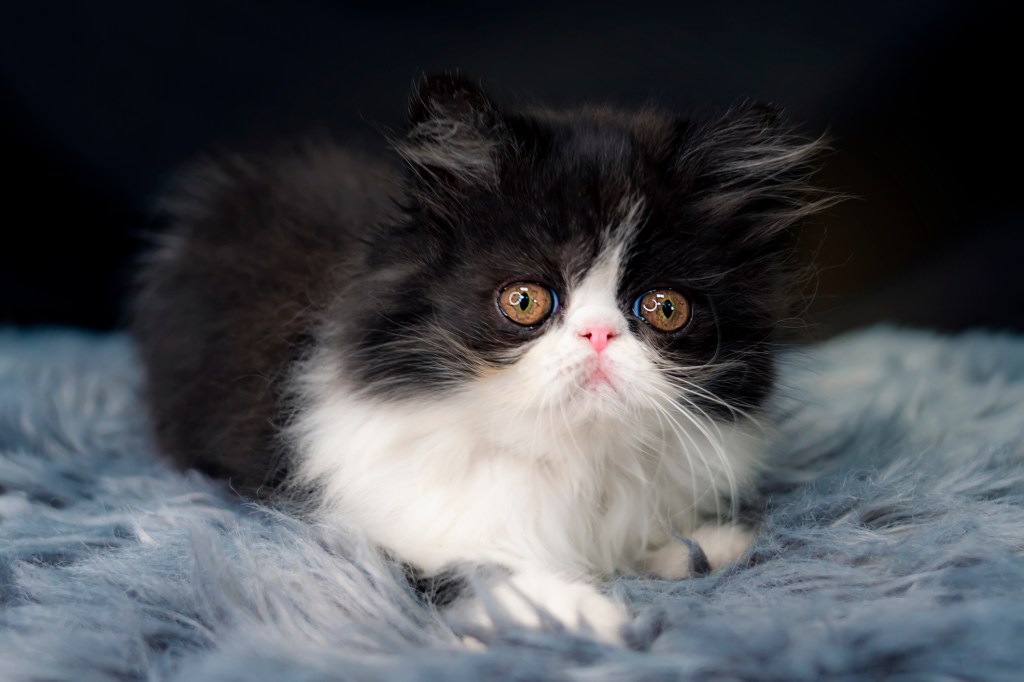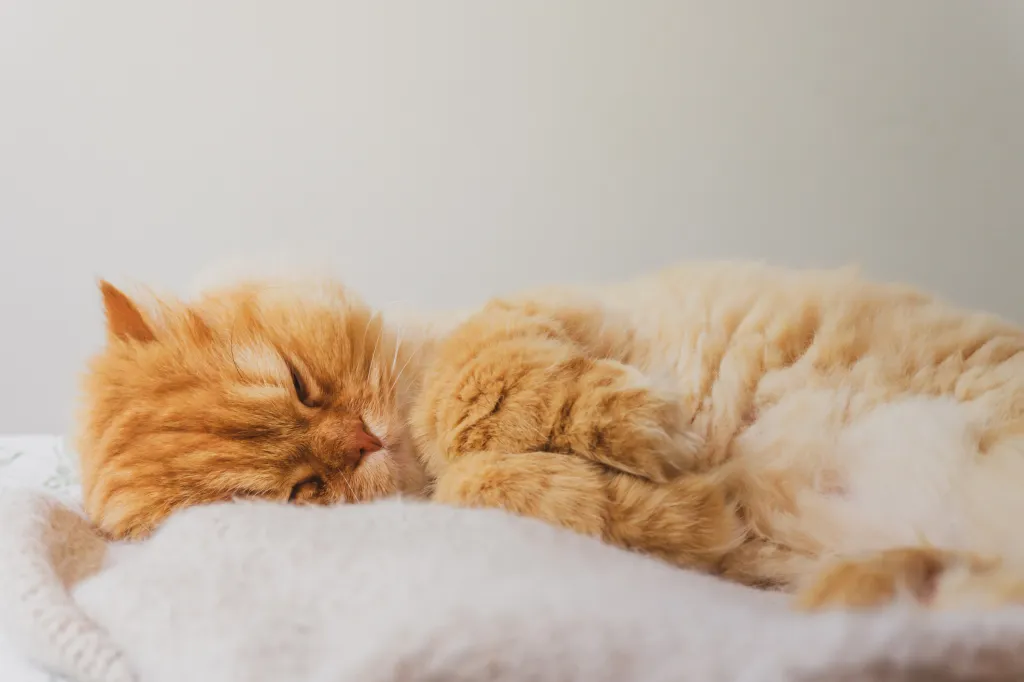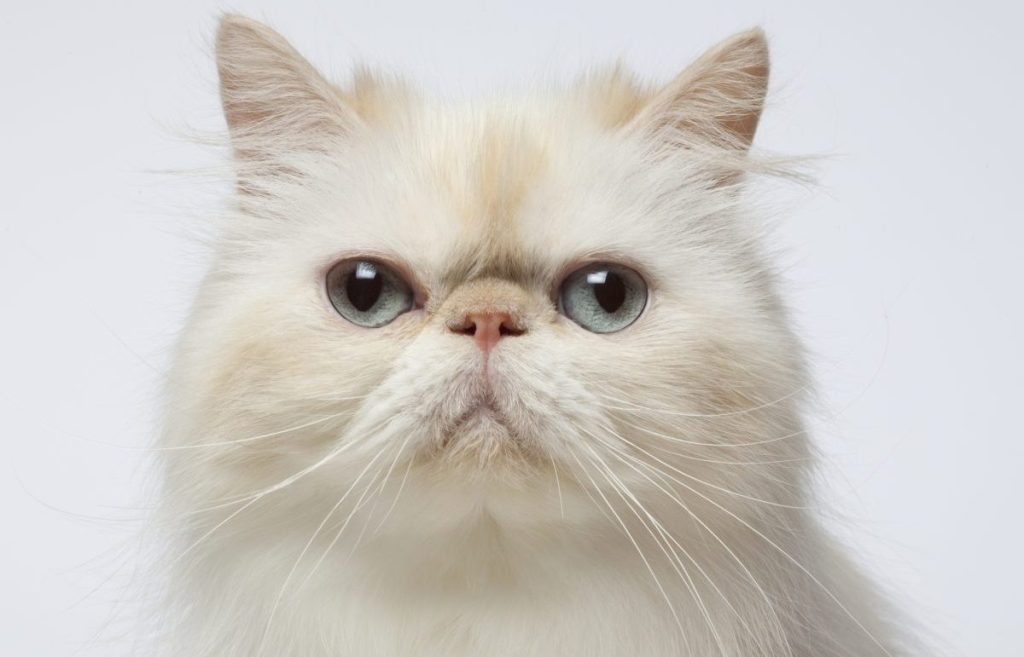The Persian cat, with their luxurious long fur and distinctive appearance, is a breed known for elegance and a regal demeanor. Originating in Persia (modern-day Iran), these cats have a distinctive round face, flat nose, and large, expressive eyes. Persian cats come in a variety of coat colors and patterns, showcasing their beauty and versatility. Despite their aristocratic appearance, Persians are known for their calm and gentle nature, making them well-suited for indoor living. They are highly affectionate and are happy to enjoy the day lounging around the house, snuggling up alongside their human companions. Regular grooming is essential to maintain their long, flowing coat and prevent matting. With their serene disposition and stunning aesthetics, Persian cats are a popular choice among cat enthusiasts worldwide.
When considering a Persian cat, it’s advisable to prioritize adopting from rescue organizations or shelters to provide a loving home to a cat in need. However, if you decide to purchase a Persian kitten, it’s crucial to choose a reputable breeder. Conduct thorough research to ensure that the breeder follows ethical practices and prioritizes the well-being of their cats. Reputable Persian breeders prioritize the health and temperament of their cats, conduct necessary health screenings, and provide a nurturing environment for the kitties. This active approach ensures that you bring home a healthy and happy kitty while discouraging unethical breeding practices.
Quick Facts
- Origin: Persia (now Iran)
- Size: Medium to large
- Breed group: Natural
- Lifespan: 12-15 years
- Coat: Long, dense, and silky, with a variety of colors and patterns
- Temperament: Sweet, gentle, and affectionate
- Exercise needs: Low
- Training: Trainable
- Grooming: High-maintenance
- Health: Generally healthy, but prone to certain health conditions, such as polycystic kidney disease (PKD) and respiratory problems
- This beloved breed dominates social media, with at least 10 famous Persian cats on Instagram.
- A Persian cat named Loretta has an interesting story arc in the 2022 film, “Lyle, Lyle, Crocodile.”
- Persian cats are popular in movies in general, taking up several spots in Entertainment Weekly’s 25 Most Iconic Cats of Cinema.
Persian Pictures






-
Affectionate with Family
Some cat breeds are typically independent and aloof, even if they’ve been raised by the same person since kittenhood; others bond closely to one person and are indifferent to everyone else; and some shower the whole family with affection. Breed isn’t the only factor that goes into affection levels; cats who were raised inside a home with people around feel more comfortable with humans and bond more easily.

See Cats Less Affectionate with Family -
Amount of Shedding
If you’re going to share your home with a cat, you’ll need to deal with some level of cat hair on your clothes and in your house. However, shedding does vary among the breeds. If you’re a neatnik, you’ll need to either pick a low-shedding breed or relax your standards. This furniture cover can make it easier to clean up cat hair and keep it off your sofa!
-
General Health
Due to poor breeding practices, some breeds are prone to certain genetic health problems. This doesn’t mean that every cat of that breed will develop those diseases; it just means that they’re at an increased risk. If you’re looking only for purebred cats or kittens, it’s a good idea to find out which genetic illnesses are common to the breed you’re interested in.
-
Potential for Playfulness
Some cats are perpetual kittens—full of energy and mischief—while others are more serious and sedate. Although a playful kitten sounds endearing, consider how many games of chase the mouse-toy you want to play each day, and whether you have kids or other animals who can stand in as playmates. A classic wand cat toy like this one is perfect for playful felines!
-
Tendency to Vocalize
Some breeds sound off more often than others with meows, yowls, and chattering. When choosing a breed, think about how the cat vocalizes and how often. If constant “conversation” drives you crazy, consider a kitty less likely to chat.
-
Kid-Friendly
Being tolerant of children, sturdy enough to handle the heavy-handed pets and hugs they can dish out, and having a nonchalant attitude toward running, screaming youngsters are all traits that make a kid-friendly cat. Our ratings are generalizations, and they’re not a guarantee of how any breed or individual cat will behave; cats from any breed can be good with children based on their past experiences and personality.
-
Friendly Toward Strangers
Stranger-friendly cats will greet guests with a curious glance or a playful approach; others are shy or indifferent, perhaps even hiding under furniture or skedaddling to another room. However, no matter what the breed, a cat who was exposed to lots of different types, ages, sizes, and shapes of people as a kitten will respond better to strangers as an adult.
-
Easy to Groom
Some breeds require very little in the way of grooming; others require regular brushing to stay clean and healthy. Consider whether you have the time and patience for a cat who needs daily brushing. You should definitely pick up this awesome de-shedding tool for cats of any hair length!
-
Intelligence
Some cat breeds are reputed to be smarter than others. But all cats, if deprived the mental stimulation they need, will make their own busy work. Interactive cat toys are a good way to give a cat a brain workout and keep them out of mischief. This scratcher cat toy can keep your smart kitty busy even when you’re not home!
-
Pet Friendly
Friendliness toward other household animals and friendliness toward humans are two completely different things. Some cats are more likely than others to be accepting of other pets in the home.
Persian History
The Persian is an old breed. To those who love this elegant cat, it will come as no surprise that the long-haired beauty originated in the cradle of civilization: Mesopotamia, which was later known as Persia and is now modern-day Iran.
The breed’s long hair was probably the result of a natural mutation, and its striking appearance attracted the attention of 17th-century Italian nobleman and world traveler Pietro Della Valle, who is credited with bringing the first longhaired cats to Europe in 1626. At that time, the cats had shiny, silky gray fur, but thanks to selective breeding Persians are now found in a kaleidoscope of colors, including bi-color (a color plus white).
Until the late 19th century, when breeding and showing cats became popular, long-haired cats from Persia, Turkey, Afghanistan and other exotic locales were known simply as “Asiatic” cats and were often bred together. At the Crystal Palace cat show in 1871, Persian-type cats were among the breeds exhibited. They were popular pets of the time and had a special cachet because of Queen Victoria’s fondness for the breed. Even in the Victoria era, association with a “celebrity” ensured an animal’s desirability.
Through selective breeding, cat fanciers began to mold the Persian to its present-day appearance. They bred cats to have a round head, short face, snub nose, chubby cheeks, small, rounded ears, big eyes, and a sturdy body. Their fur was longer than that of the Angora cat, and they had shorter legs.
Soon, the Persians surpassed the Angoras in popularity. In the United States, where they were first imported in the late 19th century, they also became favorites, edging out the longhaired Maine Coon cat, which had once held pride of place as an American sweetheart. In the little more than a century since, the Persian has become the most beloved cat breed in the world, prized for its beautiful appearance and sweet personality.
Persian Size
This is a medium-size cat. Persians usually have a weight range of 7 to 12 pounds.
Persian Personality
The dignified and docile Persian is known for being quiet and sweet. She is an ornament to any home where she can enjoy sitting in a lap—surely her rightful place—being petted by those who are discerning enough to recognize her superior qualities, and playing house with kind children who will gently comb her hair, wheel her around in a baby buggy, then serve her tea at their parties.
Persians are affectionate but discriminating. They reserve their attention for family members and those few guests whom they feel they can trust. Loud environments aren’t a Persian’s style; they are sedate cats who prefer a serene home where little changes from day to day.
With large, expressive eyes and a voice that has been described as soft, pleasant and musical, Persians let their simple needs be known: regular meals, a little playtime with a catnip mouse or feather teaser, and lots of love, which they return tenfold.
This is one cat who is unlikely to climb up your curtains, jump on your kitchen counters, or perch on top of your refrigerator. She is perfectly happy to rule her domain from the floor or more accessible pieces of furniture. When you are at work or are busy around the house, the Persian is content to adorn a chair, sofa or bed until you are free to admire her and give her the attention she willingly receives but never demands.
Persian Health
Both pedigreed cats and mixed-breed cats have varying incidences of health problems that may be genetic in nature. Although they are beautiful and sweet, Persians are prone to a number of potential health problems, most commonly related to their facial structure:
- Respiratory Issues: Due to their flat faces and brachycephalic (short-nosed) features, Persian cats are prone to respiratory problems. They may experience difficulties in breathing, snoring, and are more susceptible to respiratory infections.
- Dental Problems: Persian cats can be prone to dental issues, including gum disease and tooth decay. Regular dental care, such as brushing their teeth and providing dental treats or toys, can help mitigate these problems.
- Eye Conditions: Their distinctive flat faces can also lead to eye conditions like entropion (a condition where the eyelids roll inward) and excessive tearing. Regular eye cleaning and keeping the face area clean can help prevent these issues.
- Heat Sensitivity: Due to their long fur and brachycephalic faces, Persian cats can be sensitive to heat and prone to heatstroke. It’s important to keep them in a cool and well-ventilated environment, especially during hot weather.
- Polycystic Kidney Disease (PKD): PKD is a genetic condition that is more common in Persian cats. It leads to the formation of fluid-filled cysts in the kidneys, which can eventually lead to kidney failure. Responsible breeding practices and genetic testing can help reduce the risk of PKD in Persian cats.
- Skin Issues: Their long, dense coats can be prone to matting and skin conditions if not properly groomed. Regular brushing and grooming are essential to keep their fur in good condition.
Persian Care
The most important thing to understand about caring for a Persian is the need for daily grooming. That long, beautiful coat doesn’t stay clean and tangle-free on its own. It must be gently but thoroughly combed and brushed every day, and regular bathing—at least once a month—is a good idea.
Another factor to consider is the litter box issue. Litter may become lodged in a Persian’s paws or coat. If the cat and the litter box aren’t kept scrupulously clean, a Persian is more likely than most to just stop using the box.
Excessive tearing can be a problem in this breed, so wipe the corners of the eyes clean daily to prevent under-eye stains from forming. Brush the teeth to prevent periodontal disease. Daily dental hygiene is best, but weekly brushing is better than nothing.
It’s a good idea to keep a Persian as an indoor-only cat. She’s not a scrapper and would fare poorly against other cats, dogs, coyotes and the other dangers that face cats who go outdoors. Nor is the Persian’s coat made for shedding dirt, leaves and stickers. Letting a Persian outdoors just means that much more time spent grooming the cat. Persians who go outdoors also run the risk of being stolen by someone who would like to have such a beautiful cat without paying for it.
Persian Coat Color And Grooming
The Persian has a distinctive appearance: a large, round head; large, round eyes; a short nose; full cheeks; and small ears with rounded tips. The head is supported by a short, thick neck and a deceptively sturdy, muscular body—a type known as “cobby.” A Persian’s legs are short, thick and strong with large, round, firm paws. The tail is short but proportional to the length of the cat’s body.
A long, thick, shiny coat with a fine texture completes the Persian’s look. It’s long all over the body and includes an immense ruff around the neck, a deep frill between the front legs, long ear and toe tufts, and a full “brush,” or tail. Persians can come in different “looks.” Some, known as Peke-face Persians, have an extremely flat face. Think twice about the breathing problems such a cat might have before deciding to get one. “Doll-face” Persians are said to have a more old-fashioned appearance, with a face that is not as flat as the show Persian or the Peke-face Persian.
Persians of all stripes stand out for their infinite variety of coat colors and patterns. Imagine, if you will, seven solid color divisions—white, blue, black, red, cream, chocolate and lilac—plus silver and golden division colors of chinchilla and shaded silver or golden and blue chinchilla and blue shaded silver or golden; and then there are the shaded, smoke, tabby, calico, particolor and bicolor divisions. That’s not counting the various pointed patterns of the Himalayan.
Eye color is related to coat color. For instance, white Persians have deep blue or brilliant copper eyes; other solid-colored Persians have brilliant copper eyes; silver and golden Persians have green or blue-green eyes; and so on.
Children And Other Pets
Persians aren’t the best choice for a houseful of boisterous children and dogs, but they have no objection to being the object of a gentle child’s attentions or to rubbing along with a friendly dog who doesn’t chase them or otherwise cause them anxiety.
Persian Rescue Groups
More Info For You
If you’re also looking for a dog, check out DogTime’s dog breed page!





